David Dye's Blog, page 5
June 23, 2025
How Human-Centered Leaders Understand Other Perspectives
You’ve done the work. The plan is solid, and you’re ready to roll. And still—before you hit go—it’s worth taking a moment to ask: “How might this land for the people it affects?”
Yeah, that pause can feel inconvenient. You might hear things you can’t fully fix. But asking the question doesn’t mean you’re hesitating. It means you care. It means you’re leading with eyes open.
Because leadership isn’t just about making the call—it’s about how that call shows up in people’s lives. The most trusted leaders? They don’t just drive outcomes. They make space for perspectives. That kind of awareness doesn’t slow you down—it clears the way forward, with fewer bumps and more buy-in.
Why Perspective-Taking Matters in Human-Centered LeadershipPeople want to know their experience matters.
When you actively seek others’ perspectives:
Decisions get stronger—because you catch what you might’ve missed.
Friction goes down—because people don’t feel blindsided.
Trust goes up—because people feel respected and included. It helps convey that you have their best interest at heart.
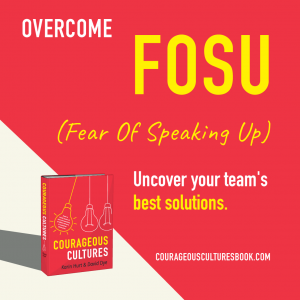
That’s human-centered leadership in action. It’s not about being soft. It’s about being smart—because when people feel heard, they contribute more fully.
Why So Many Leaders Skip This Step (and What it Costs)It’s easy to default to speed. The meeting’s wrapping up. The decision feels solid. No one’s raised a concern, so you assume everyone’s aligned.
But in that silence, trust can quietly erode.
When people feel excluded—or sense that speaking up won’t matter—they rarely push back. They quietly disengage. That’s how momentum stalls, how quiet misalignment spreads. You won’t always hear resistance, but you’ll feel it in missed context, lukewarm follow-through, or the project that technically lands but never fully takes off.
Human-centered leaders don’t wait for the signs to show up. They make space early—with questions that invite people into the process in a focused, safe way.
In our book, Courageous Cultures, we call those Courageous Questions.
They’re short. Targeted. Answerable. Each one invites just one insight at a time, which makes it easier to respond with honesty—even in a fast-moving conversation. For example:
“What’s the part of this plan that’s most likely to cause confusion?”
“What impact are you most worried this change might have?”
“Where might this new technology create friction for your team?”
“If you were sharing this strategy with someone new, what would be hardest to explain?”
“What’s the risk we haven’t talked about yet?”
Courageous questions don’t overwhelm. They clarify. They say, “I’m not asking for everything—I’m asking for what matters most from your view.”
And when leaders ask them consistently, people stop wondering if it’s safe to speak up. They start believing their voice matters.
So while it’s faster to move without asking, it’s smarter—and far more powerful—to slow down just enough to hear what would otherwise be missed.
Mini-Personal Experiments to Understand Other PerspectivesHere are three courageous, human-centered, mini-personal experiments that help you gain perspective.
 1. Perspective Pause
1. Perspective PauseOnce a day for the next month, ask someone:
“How does this affect you?”
Not everyone will have a big answer. But the ones who do might open your eyes to something critical.
Before launching anything, pause and ask:
“How might this land with someone outside my function—say, in ops, sales, or IT?”
Then go check your assumptions with someone in that role. You’ll build understanding and credibility.
See Also:The Collaboration Checklist for Leaders: 5 Questions to Guide Better Decisions
3. Impact Check-InAfter a meeting, change, or rollout, ask two people:
“What part of that worked for you—and what didn’t?”
Capture the feedback. Let it shape your next move. This shows you’re not just delivering decisions—you’re listening to their impact.
You don’t have to solve every concern. You don’t need to agree with every point of view. But when you make space to understand how your choices affect others, you reinforce trust.
And that’s what makes a leader not just effective—but respected.
So before you hit send, before you lock in the plan, ask:
“What’s this like for the people living it?”
That’s how human-centered leaders lead—with people in mind and progress in sight.
Q: What if I don’t have time to check in with everyone?
A: You don’t need to ask everyone every time. Prioritize key stakeholders, and use quick, thoughtful check-ins. Even asking one or two people from different roles gives you valuable insight that can shape smarter communication or smoother execution.
Q: What if I ask “How does this affect you?” and get no response?
A: That can be a signal in itself. It might mean people don’t feel safe being honest. Over time, consistent curiosity builds that safety. You can also try courageous questions that are more specific, “What’s one change that would make this easier?” “What’s one concern i should I be thinking about that I might not see?”
Q: Isn’t this just empathy? Why not call it that?
A: It’s connected to empathy—but it’s more targeted. This approach is about applying curiosity in context, especially when decisions or changes are in motion. It’s empathy in action, centered around practical insight and relationship trust.
Q: How does this fit with other leadership priorities like performance or accountability?
A: Beautifully. Understanding others’ perspectives doesn’t mean softening standards—it means removing hidden barriers and building clarity. That makes it easier to hold people accountable because expectations are understood and shared.
Are you looking for more ways to encourage courage or hiuman-centered leadership on your team? We can help. Contact us for more information about our leadership development progams, keynotes, or workshops.
The post How Human-Centered Leaders Understand Other Perspectives appeared first on Let's Grow Leaders.
June 21, 2025
Turning Data Into Insights: What Smart Communicators Do Differently
You’ve been there. Someone senior asks, “Can you get me the numbers on this?” and you spring into action—spreadsheets flying, dashboards glowing. You deliver all the data and more… and the response? Blank stares. Follow-up questions you weren’t ready for. Maybe even frustration. Here’s the thing: your job isn’t just to share information. Your job—especially if you want to build trust and influence—is turning data into insights that help people make smart decisions. Let’s talk about why that often goes sideways, and what to do instead.
What Might Be Getting in the Way of Your InfluenceEven when you’re working hard and have all the right data, there are a few easy-to-miss spots that can limit the impact of your message. Here are four common traps to watch out for—especially if you’re aiming to turn data into insights that inspire confidence and action.
1. The ask isn’t fully clear.It’s tempting to jump right in the moment someone says, “Can you pull the numbers?” However, a quick pause to clarify can save a significant amount of rework. Are they prepping for a board meeting? Making a tough call? Just getting a feel for how things are trending? A little context can completely change what “the right data” even looks like.
2. You’re thinking through your lens.You might be a “show me the patterns” kind of person, so you prep your analysis the way you’d want to receive it. But what if your leader prefers quick takeaways and big-picture clarity? Influence often comes down to presentation, and the best communicators flex to match their audience.
3. You default to “just the facts.”Sometimes, especially in fast-paced environments, it feels safer to stick strictly to what was asked. But when you’re close to the work, your insight matters. Offering a little context or suggesting a next step doesn’t mean you’re overstepping—it shows you’re thinking strategically and making life easier for your stakeholders.
4. You clean it up a little too much.Yes, polish your presentation and make it easy to read– just don’t smooth over the truth. Cutting off a trendline early or leaving out negative results might feel protective in the moment, but it can undermine trust. Leaders want perspective—with candor, care, and a plan.
The Four Questions That Turn Data into Influence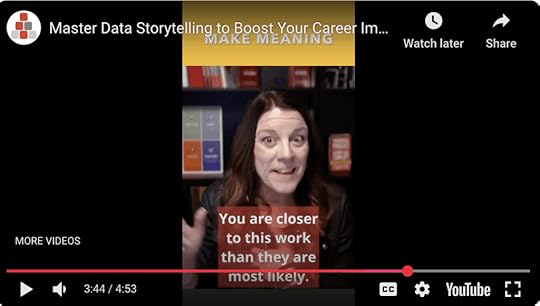
Before you share anything—email, slide deck, or hallway chat—ask yourself these:
1. What’s the real ask here?Are they making a decision, presenting up, or just curious? Try this:
2. How do they want it?“To be sure I give you exactly what you need, how will you be using this information?”
Email summary? Visual dashboard? One-pager for a board book? Ask:
3. When do they need it?“Would it be most helpful in bullet points, a visual summary, or something else?”
It’s easy to assume “whenever” means next week—until they show up at your desk at 3 p.m. asking, “Hey, do you have that yet?” Clarify the deadline and expectations.
4. What does the data mean?This where turning data into insights lives. You’re closest to the work—so take a stand. Offer perspective. Anticipate the next three questions they’re going to ask, and answer them before they do.
Frequently Asked Questions: Powerful Responses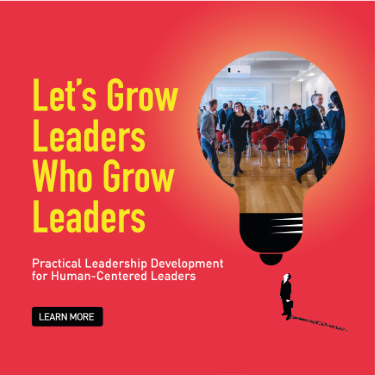
What if I’m not sure what they’re going to do with the data?
Ask! Say:
“Can you give me a sense of how you’ll be using this? That’ll help me tailor what I send.”
This helps you avoid oversharing—or underdelivering.
How do I push back on an unrealistic deadline?
Try this:
“I want to make sure I get this right for you. Given what’s on my plate, would you prefer a high-level summary today and the full analysis tomorrow?”
You’re showing urgency and protecting quality.
What if it’s bad news? How do I share it without risking ‘shoot the messenger’?
Lead with transparency and empathy:
“This isn’t great news, but I wanted to flag it early so we have options.”
Then follow up with context, possible causes, and next steps. You’re not just bringing problems—you’re bringing insight.
See Also: Motivate Your Team: Use Data to Drive, Not Drown
How Do I Get My Boss to Recognize My Expertise?
Are you looking for practical leadership development for your executive or leadership team? Let’s connect.
The post Turning Data Into Insights: What Smart Communicators Do Differently appeared first on Let's Grow Leaders.
June 20, 2025
Revolutionary Leadership Strategy: How to Transform Team Urgency Today
Episode 308: Is your leadership strategy unintentionally killing the urgency your team needs to succeed?
If you’re leading a team in the middle of a big change or a multi-year strategy rollout, you already know how hard it is to get people moving faster without burning them out or coming off like a micromanaging jerk. This episode is your guide to solving that leadership dilemma—so your team follows through with energy, clarity, and momentum.
In this episode, you’ll discover:
Why saying “we need more urgency” usually backfires—and what to say instead
Five communication habits that instantly create clarity, reduce friction, and build sustainable speed
How to remove hidden roadblocks (like risk-aversion, false urgency, and burnout) that quietly kill follow-through
If you’re ready to lead your team with focus, urgency, and humanity, hit play and grab five powerful skills you can use today.
Building a Culture of Urgency Without Burning Out00:00 — Why Urgency Fails (and What to Do Instead)
Many leaders unintentionally undermine the urgency they want by using vague language, such as “be more committed.” This episode provides practical leadership strategies to help your team follow through more efficiently, without resentment or confusion.
04:41 — Urgency Means Different Things to Different People
“Urgent” can mean “drop everything” to one person and “end of the week” to another. David explains why aligning definitions is one of the most overlooked leadership strategies.
05:59 — Schedule the Finish: Your Secret Weapon
The first of five key communication skills—“scheduling the finish”—ensures accountability by putting clear, agreed-upon deadlines on the calendar. This strategy beats vague due dates every time.
07:49 — How to Handle Routine Tasks with Urgency
For recurring responsibilities, group tasks into buckets and create shared expectations. Effective leadership strategies must apply the same clarity to routine work as to one-off projects.
08:46 — Delegated Work Needs Finish Lines Too
Unclear commitments slow teams down. David demonstrates how to schedule finish lines for hallway conversations and quick chats, making follow-through predictable and reliable.
10:52 — Check for Understanding, Not Agreement
“Do you understand?” is not enough. Leaders must verify shared comprehension by asking team members to articulate next steps and timelines in their own words—one of the most underrated leadership strategies for reducing delays.
11:48 — Five-by-Five Communication for Faster Execution
Communicating key messages five times, five different ways, ensures they stick. Use this method to reinforce not just what to do, but why it’s urgent, without overwhelming your team.
13:44 — Address Conflicting Priorities Head-On
Leaders often confuse by avoiding tough conversations about values like speed vs. quality. Strategic leaders resolve those conflicts explicitly, giving their teams clear direction and confidence to act.
15:20 — Why You Must Close the Loop
Failing to acknowledge follow-through—or letting tasks die in silence—kills momentum. Celebrating completions and holding people accountable sends a clear message: urgency matters here.
21:36 — Practicing Urgency at a Human Scale
Sustainable leadership strategies recognize that no one can sprint forever. David shares tips for knowing when to push and when to pause—so your team can stay energized and avoid burnout.
The post Revolutionary Leadership Strategy: How to Transform Team Urgency Today appeared first on Let's Grow Leaders.
June 16, 2025
Make Meaning: Because When People Know Why, They Care More About How
(Without Sounding Like a Walking Mission Statement)
You’ve seen it. Maybe you’ve been it—the glazed eyes. The robotic checkbox ticking. The “I’m just here so I don’t get fired” vibe. It’s not burnout. Not boredom. It’s sneakier than that: disconnection from meaning.
That’s where the Clarity Habit “Make Meaning” swoops in wearing a cape (but like, a practical one with pockets). This habit is your invitation to step out of the task tornado, zoom out, and say: “Hey team, this matters.”
It’s not fluff. It’s fuel.
What “Make Meaning” Means (Hint: It’s Not a TED Talk)This isn’t about plastering “vision” posters on the breakroom fridge next to someone’s 3-week-old yogurt.
“Make Meaning” means helping people see the purpose behind the process—in daily chats, emails, Teams messages, project updates, hallway banter. Anywhere people might forget that their work does more than fill spreadsheets.
You’re not just assigning tasks. You’re giving people a “why.”
NOTE: We have nothing against TED Talks; they’re great.
In fact, you can watch Karin’s TEDx here: The Secret to Getting Remarkable Ideas You Can Actually Use
Why Making Meaning Works (And Why It Matters More Than Ever)Because humans aren’t just productivity machines. They want to matter. When people know why they’re doing something, wild things happen:
Motivation climbs. (“Wait… this helps real people? I’m in.”)
Focus sharpens. (Because when you know the “why,” the “what now?” is easier.)
Engagement deepens. (Tasks stop feeling like a grind and start feeling like a contribution.)
Commitment replaces compliance. (Nobody gets jazzed about just “following orders.”)
Meaning is what moves us from “I guess I’ll do it” to “This is important, and I’m part of it.”
Why Connecting to Why is Harder Than It Sounds (But Still Worth It)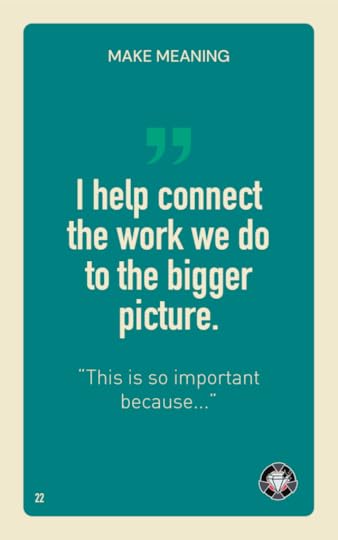
It’s easy to assume people already know the why. Or to speed past it in our rush to just get. it. done.
But even a two-second reframe can shift a whole conversation. Try it:
“This is so important because…”
Boom. Fuel. Connection. Instant clarity.
See Also: Why to Explain Why Again
Make It Real (Without Sounding Like a Corporate Buzzword Generator)Want to practice the Make Meaning habit in ways that feel natural, not forced? Try these:
Drop your go-to phrase. Say “This is so important because…” in kickoffs, updates, casual convos—anywhere context might help.
Connect people to people. “This makes life easier for our customers/colleagues/the janitor who’s still trying to find the mystery smell.”
Spot the ripple effect. “If we get this right, it unlocks ___.”
Celebrate more than metrics. “Yes, we hit the number—but we also built something better.”
Ask others. “What feels most meaningful about this for you?”
Try These Powerful Phrases on for SizeHere are a few more powerful phrases to make meaning land without sounding like you swallowed a mission statement:
“Here’s how this connects to the bigger goal…”
“This reminds me why we do what we do.”
“Our work on this helps the whole system run smoother.”
“This matters because it builds trust.”
“When we do this well, it changes things for real people.”
Three Quick Habit Builders (Mini-Personal Experiments)The Daily Drop: For 30 days, say “This is so important because…” once a day. Watch how the vibe shifts.Purpose Journaling: At the end of each day, jot down one moment your work meant something. Not epic—just real.Context Booster: Each week, pick a project and share a two-sentence “why it matters” blurb with your team. Watch what happens next.Read more on the power of mini-personal experiments to create habits.
The Bottom LineMeaning isn’t a cherry on top—it’s the cake. When you help others see the purpose behind the task, you don’t just get things done—you build pride, connection, and momentum.
And it all starts with:
“This is so important because…”
The post Make Meaning: Because When People Know Why, They Care More About How appeared first on Let's Grow Leaders.
One of the Secret Innovation Barriers That Keeps Your People from Solving Problems
You’re a leader who wants ideas. You’ve done the Courageous Cultures work to build a workplace that encourages everyone to speak up, identify problems, and offer solutions. Everyone knows where you need ideas. You intentionally ask for solutions where you most need them. And when someone speaks up, you respond with regard. But despite that significant work, you still face hidden innovation barriers.
So… why is your team still holding back?
One of the most common innovation barriers you might overlook isn’t about people’s fear of rejection or thinking their idea won’t be good enough.
It’s their fear of overwhelm: “If I make a suggestion… I’ll just end up with more work.”
And so that person stays silent because they feel that if they speak up, they’re going to be punished with more work on top of what they already have.
In fact, in our Courageous Cultures leadership development programs and keynotes, this concern about “an idea just means more work” is the most common question we hear.
This unspoken fear paralyzes initiative and strangles creativity. But when you surface and address this fear head-on, you’ll get more problem solving, innovation, and better ideas.
5 Ways to Overcome One of the Most Common of Innovation Barriers: Alleviate the Fear of More WorkTo alleviate the fear of overwhelm and break the belief that “you suggest it, you own it,” focus on transparency, eliminating tasks, sharing the load, and managing priorities. Here are five ways to do this:
1. Respond with Regard—and with RealityLet’s start with how you respond to an idea. If you consistently Respond with Regard, you know the value of meeting ideas with:
Gratitude for their caringAdding informationInviting them to continue caring and contributingBut responding with regard doesn’t mean blind enthusiasm for every idea you hear.
When someone shares an idea, appreciate that they cared enough to try—and also explore it honestly. Over-enthusiastic responses minimize the work and tradeoffs involved. You might leave your team member with the mistaken belief that you loved their idea—with no awareness of just how much work it would take.
So, either the idea languishes and they resent your inaction or the idea ends up back in the person’s lap who suggested it—and they resent the work and overwhelm.
Instead, bring transparency to the conversation. Here are some Powerful Phrases to try:
“Thank you for thinking about how we can… That’s fresh angle! Let’s talk through what it would take to make it work.”“That’s an intriguing concept. What do you see as the biggest lift if we were to move forward?”“Before we jump into action, let’s unpack what implementing this would involve.”Discussion Prompt for Your Team:“What’s something we’ve said ‘yes’ to in the past that could have used more upfront discussion?”
2. Own the U.G.L.Y.—What’s Got to Go?Innovation isn’t additive—it’s adaptive. If you always layer on new ideas without removing anything, your team will understandably resist. Your people are thinking, “Sure, love that idea. But what are we taking off my plate?”
Create space for innovation by making the trade-offs visible. When you explore opportunities and challenges, use our Own the U.G.L.Y. method. These four questions will help you find places to make room and directly overcome the fear-based innovation barriers:
U—What are we Underestimating?
G—What’s got to Go?
L—Where are we Losing?
Y—Where are we missing the Yes?
All four questions will help, but the G question will guide your team’s focus on what they can eliminate to make room for new ideas.
Here are some more Powerful Phrases to try as you focus on making room:
“What would we need to stop doing or do differently to make room for this?”“If we say yes to this, what’s the ‘no’ that comes with it?”“Where can we simplify to find the time and attention this needs?”Discussion Prompt for Your Team:“If we were to seriously pursue this innovation, what would we not do?”
3. Have the Stakeholder Conversation—Who’s Best to Lead This?You don’t want great ideas to die because the originator isn’t the best implementer or because the best person to do the work isn’t available.
Instead, have a conversation about who could own the task. Who might have enthusiasm? Who has the skill set? When you follow up on quality ideas with these questions, you make it safe for people to contribute ideas without fearing full ownership.
Powerful Phrases to Try:
“That’s a strong concept. Who else might be a good partner or owner for this?”“Would you be open to collaborating on this with someone who has this skill set and capacity?”“Who’s best positioned to champion this idea—based on skills, interest, and availability?”Discussion Prompt for Your Team:“What norms do we want around idea ownership and implementation? What feels fair?”
4. Schedule the Finish—Don’t Leave Ideas HangingYou have a worthwhile idea, have transparently discussed the work, who will do it, and what to eliminate.
But the absence of clear next steps will stall progress. People wonder, “Was that just a brainstorming session? Is someone going to follow up?” Worse, the idea fizzles in ambiguity, feeding cynicism and the belief that “if I don’t do it, nothing changes.” And then you’re right back to struggling with this innovation barrier.
Instead, Schedule the Finish to move from conversation to commitment.
You schedule the finish by discussing a specific finish line while considering competing priorities. And yes, you can schedule the finish even if the next step is simply “decide later.”
Here are Powerful Phrases you can use to invest in commitment and follow through:
“What’s one action we can both agree to as a next step?”“Let’s schedule fifteen minutes in three weeks to discuss how it went and what you learned.”“So to recap, we’ll explore feasibility this month, then regroup by [date]. Is that your understanding?”Discussion Prompt for Your Team:“How can we build in time to follow-up on ideas we liked but can’t act on yet?”
5. A Strategy to Help Your Idea GrenadiersWhen you face someone who’s constantly lobbing ideas and expecting you to do something with them, you might want to hand them the work in order to cool their enthusiasm. But we don’t recommend you do that. You’ll create resentment and reinforce that feeling that ideas mean more work.
Instead, you can help your “Idea Grenadiers” by giving them a specific framework to vet their ideas and think through the implications before bringing them to you. Give them the I.D.E.A. Model framework and ask them to answer these questions when they bring you their ideas:
I—Why is this idea Interesting?
How is the idea strategically relevant? What problem does it solve?
D—How is this idea Doable?
Demonstrate how we have agency to take action.
E—Who do we need to Engage to make this happen?
Who will resist the idea? How have you addressed their concerns? Who else needs to support the idea to make it happen?
A—What are the one or two specific next steps to take Action?
Help your idea grenadiers by using an advanced Respond with Regard:
Start with appreciationWhen you add information, share the challenge of being overwhelmed with ideas, then give them the I.D.E.A. model.Invite them to continue contributing ideas by using the I.D.E.A. modelFinally, practice accountability. When your idea grenadier follows through with the I.D.E.A. model, thank them and reinforce the difference it makes. When they try to share an idea without the model, you can reinforce the model by saying, “I’d love to hear more when you’ve run in through the IDEA model.”
Your TurnPeople want to make a difference—but they also want a manageable workload. When you acknowledge the invisible fear of being buried in extra work, you remove one of the critical hidden innovation barriers.
And if you’d like help to build a courageous culture—an organization filled with problem solvers, innovators, and customer advocates—we can help. You can learn more here:
The post One of the Secret Innovation Barriers That Keeps Your People from Solving Problems appeared first on Let's Grow Leaders.
June 13, 2025
The Leadership Mindset that Undermines Work Life Balance
Episode 307: Struggling to find real work-life balance while juggling endless to-dos and leadership demands?
If you’re burning out from chasing productivity hacks, working overtime, and still not finding peace or fulfillment, this episode is your wake-up call. Discover why your internal dialogue—not just your workload—is the real source of stress and how to reset your leadership mindset before it costs you your energy, your team, or your purpose.
Here’s what you’ll walk away with after listening:
A powerful mindset shift to help you break free from the myth of “doing it all”
A practical framework for identifying and acting on what matters most each day
Clear strategies to lead both yourself and your team with intention, balance, and focus
🎧 Hit play now to escape overwhelm and reclaim your work-life balance by focusing on what matters most.
Mind the MIT: Escaping the Overwhelm Trap00:00 – Welcome & Episode Preview
David introduces a “tough love” episode focused on the mindset that leads to constant overwhelm. He sets the stage for rethinking how we invest time and energy to build a career aligned with purpose and .
00:51 – The Most Important Conversation You’ll Ever Have
This episode isn’t about your team or your boss—it’s about the internal dialogue you have with yourself. David gets candid about his own ongoing struggle with overwhelm and how self-awareness is the first step toward change.
02:19 – The “No Limits” Mindset That Keeps You Stuck
With humor and empathy, David unpacks the mindset trap of trying to “do it all.” This unrealistic approach sabotages your productivity and leads to burnout, not balance.
04:11 – Understanding the Reality of Infinite Need
Whether at home or work, demands are endless. David illustrates how the sheer volume of possible to-dos makes it essential to prioritize—not just optimize.
06:02 – Embracing the Finite Nature of Time
Referencing 4,000 Weeks by Oliver Burkeman, David stresses the beauty of limitation. Recognizing that you have only so many hours in a day is a freeing truth—not a burden.
08:24 – “Walking Anxiety Disorder” Syndrome
David references a powerful quote about high-achieving professionals and the anxiety beneath the surface. True work-life balance starts with accepting our limits, not fighting them.
09:30 – What Really Matters Right Now?
The concept of “mind the MIT” (Most Important Thing) takes center stage here. David encourages listeners to ask themselves what truly matters in each moment—and then act accordingly.
12:14 – Saying No Isn’t Optional, It’s Essential
To lead with purpose, you must sometimes push back—yes, even to your boss. David highlights Episode 253 on saying no at work for deeper guidance.
14:19 – The Cost of Golden Handcuffs
David acknowledges the difficulty of leaving high-paying but toxic work environments. He challenges listeners to consider what they might be sacrificing for the sake of comfort—and how it erodes long-term work-life balance.
16:17 – How to Build Human-Centered Systems
The episode concludes with a call to action for leaders: create systems and cultures that acknowledge and respect limits. Build in conversations about feasibility and competing priorities to prevent team burnout before it begins.
The post The Leadership Mindset that Undermines Work Life Balance appeared first on Let's Grow Leaders.
June 12, 2025
Recurring Conflict at Work? Here’s How to Stop the Merry-Go-Round
Here’s How to Fix Recurring Conflict for Good 🎠
You’ve had that conversation before—the one where you finally address the issue with your coworker. Maybe you both used some of your favorite codes or Powerful Phrases. Maybe it even ended in a smile.
But then comes Monday.
Same conflict. Same reaction. Oh yes, and same result.
Welcome back to the recurring conflict merry-go-round.
So what do you do when you think you’ve resolved a workplace issue… and it just keeps spinning back your way? Let’s talk about that.
Why Recurring Conflict Happens (Even When You Thought It Was Fixed)If you’re stuck in recurring conflict, you’re not alone—we hear about this pattern all the time in our leadership programs. Someone speaks up, everyone nods, but nothing actually changes.
Here’s why that happens:
There’s no shared clarity.The commitments are too vague.They fail to schedule the follow-up.If you’re not intentional about how you land the conversation, it’s easy to hit “repeat” instead of “resolve unintentionally.”
Four Ways to Break the Cycle of Recurring Conflict

Watch this Asking for a Friend Video (Filmed in Dollywood)
1. Start With Genuine ConnectionRecurring conflict often comes from assumptions about intent. So before you jump into logistics, begin with connection.
Say something like:
“I really care about you and this project, and I’m confident we can find a solution that works for both of us.”
This tells the other person: I’m not here to blame you. I’m here to fix this with you.
2. Get Crystal Clear on What You’ve Agreed ToA major cause of recurring conflict is leaving the conversation without aligned understanding. You think they meant one thing. They think you meant another.
Fix it with this simple phrase:
“So what I’m hearing is that we’ve agreed to ____. Is that right?”
If you walk away with different expectations, you’re guaranteed to be back on the conflict carousel next week.
3. Replace Vague Agreements With Tangible ActionsIf you’ve ever “agreed to communicate better” or “be nicer,” you’ve seen how quickly vague agreements lead right back to—you guessed it—recurring conflict.
Instead, go specific:
“So, we’ll each post our updates in the shared doc by Thursday noon. That way we’re not chasing each other for input on Friday.”
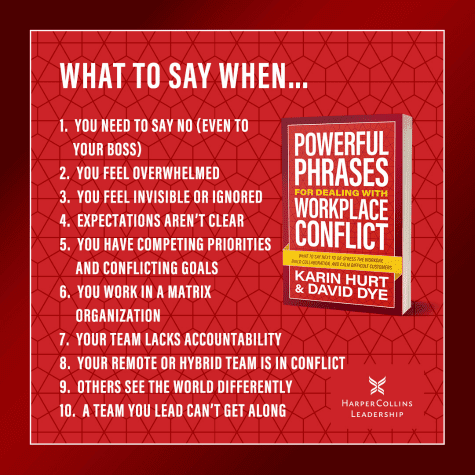 Now you’ve got a real agreement, not just good intentions.
Now you’ve got a real agreement, not just good intentions.
Here’s the power move: don’t end a conflict conversation without setting up the follow-up.
Say this:
“Let’s schedule a quick check-in in two weeks to see how it’s going. I’ll put it on both our calendars.”
This builds accountability and gives you a natural window to course-correct—before the conflict recurs.
Dealing With the Emotional Leftovers of Recurring ConflictOne reason recurring conflict keeps, well, recurring… is that we pretend it didn’t happen before.
Don’t skip the emotional truth. Acknowledge it:
“It sounds like this issue has been frustrating for both of us. I appreciate you being willing to keep working through it with me.”
You’re not just solving the behavior—you’re tending to the relationship.
Move From Recurring Conflict to Consistent ProgressRecurring conflict doesn’t mean you’re bad at resolving issues—it just means the clarity, specificity, or commitment wasn’t strong enough last time. But you can fix that.
Next time the merry-go-round starts to spin, bring these to the ride:
Connection that shows you care
Clarity that confirms you’re aligned
Specific agreements you can track
A scheduled check-in to close the loop
See Also: Navigating Workplace Conflict: An Interview with Ralph Kilmann
The post Recurring Conflict at Work? Here’s How to Stop the Merry-Go-Round appeared first on Let's Grow Leaders.
June 6, 2025
“Get Off Your Butt” Isn’t Sales Coaching (But Here’s What Is) with Video
We were at the ATD (the global Association for Talent Development) conference, chatting with folks at our booth, when a sales manager stopped by, clearly frustrated with unsuccessful attempts at sales coaching and seeking better solutions.
He laughed, “Alright, I’ve got some powerful phrases for you. How about: ‘Get off your butt and do your job!’ Or maybe: ‘What the [bleep] do I have to say to get you to do your job?’”
It was the kind of laugh that comes from someone who’s tried everything and still isn’t seeing the results.
It’s true. Those phrases are “powerful”, but not in the way you want. They might feel satisfying in the moment, but they don’t create accountability. They don’t coach. And they definitely don’t help people grow.
If you’ve ever felt that kind of frustration, let’s give you some powerful phrases for more effective sales coaching.
Powerful Phrases That Work Better Than “Just Do Your Job” (An Asking For a Friend Video)
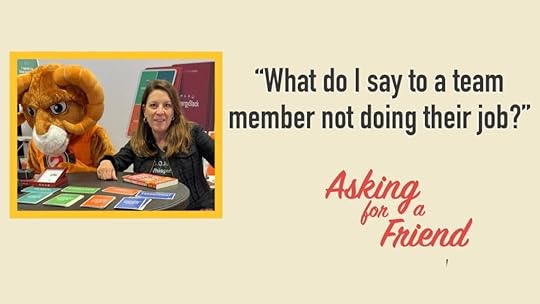
Watch this Asking for a Friend Video
1. Connection: Start with “I’ve got your back”Before you get into metrics or missed expectations, make sure the person knows you’re in their corner.
Try this:
“I care about your success, and I want to see you win.”
“You matter to this team, and I’m here to help you move forward.”
Why this human-centered approach works: If they feel like you’re coming in hot with judgment, they’ll shut down. Start with relationship, and you create space for better conversation.
2. Clarity: Define what “better” looks like at a habit levelTelling someone to “do better” isn’t sales coaching. Coaching is making the invisible visible—spelling out what successful habits look like, day to day.
Try this:
“Let’s talk through the habits behind the results. Where are the gaps?”
“Here’s what I’ve seen work: three outreach blocks a day, five clean contacts per block. How does that line up with your current rhythm?”
Why it works: Clarity turns performance into a process. Now it’s not about whether someone is “good at sales”—it’s about whether they’re doing what works.3. Curiosity: Ask before you assumeWhen a sales personisn’t performing, the worst thing you can do is assume you know why.
Try this:
“What’s getting in the way right now?”
“Where are you getting stuck in your process?”
“What would make it easier to follow through on what you’ve committed to?”
Why it works: Curiosity opens the door to truth. It shifts the tone from “What’s wrong with you?” to “What’s going on?” That shift changes everything.
4. Commitment: Make it specific. Make it mutual.Sales coaching doesn’t end when the conversation feels complete. It ends when there’s a clear next step—one both of you are accountable for.
Try this:
“So what I hear you committing to is reaching out to 15 decision-makers this week, and following up with your warm leads by Friday. Is that right?”
“Let’s check in next Thursday at 3:00 and see how it’s going.”
Why it works: Specific commitments drive behavior. When people know what’s expected—and when it will be revisited—they’re more likely to follow through.
FAQs: Sales Coaching That SticksQ1: What do I do when I’ve coached clearly and consistently—but the performance still isn’t improving?
First, ask: are they doing the habits or just nodding in the meetings? If they’ve truly followed through and still aren’t seeing results, adjust the strategy. But if it’s inconsistent execution, you’ve moved from a coaching conversation to a performance management one. Clarity and compassion go together—but accountability still matters.
Q2: What do I do if they agree to new habits… but then go right back to the old ones?
That’s your cue for an INSPIRE conversation. When someone commits to change and doesn’t follow through, it’s not time for another pep talk—it’s time for a grounded, clear, and human conversation about what’s really going on.
The INSPIRE method helps you do just that. You stay focused on the impact, explore what’s preventing follow-through, and reset expectations—together.
Try opening with:
“You’d committed to making those three daily outreach blocks. I noticed that didn’t happen last week, and I know that’s not what either of us wants. What’s going on?”
More on the INSPIRE method here.
Q3: How can I help my frontline managers develop their own sales coaching skills?Model it. Narrate your thought process. Invite them into your coaching sessions. And give them a simple structure like the Four Dimensions—Connection, Clarity, Curiosity, Commitment—so they’re not guessing. Sales coaching is a leadership multiplier. Equip them early. You can also use our SynergyStack® Team Development System to help identify habits and approaches to build stronger relationships with clients and prospects.
Q4: How do I coach someone who’s been in the role forever and thinks they’ve got nothing left to learn?
Start with respect. “You’ve been doing this a long time—and I know you’ve got strong instincts. What’s one area where you’re still trying to level up?” Even seasoned reps have blind spots. Invite them into ownership instead of challenging their ego head-on.
P.S. I love working with sales teams to identify their MIT (most important thing habits) that will lead to breakthrough success. If you’ve read our book, Courageous Cultures, you know how focusing on a single habit can make all the difference (in chapter 6 I share the massive turn-around story of my 2200 person sales team at Verizon, who nailed it this and one the President’s Award for Customer Growth that year. Contact me to learn more about bringing a one-day SynergySprint to your sales team.
The post “Get Off Your Butt” Isn’t Sales Coaching (But Here’s What Is) with Video appeared first on Let's Grow Leaders.
1 Surprising Way to Ensure You Grow Your Leadership Skills
Episode 306: What if the most powerful feedback tool to grow your leadership skills isn’t in your manager’s hands—but yours?
Let’s face it—leaders often struggle to get the kind of feedback they actually need to grow. Either it’s anonymous, vague, or just too expensive to implement consistently. But what if you could skip the formalities and get real, useful insights directly from the people you work with every day—without spending a dime? This episode introduces a game-changing approach that puts your growth squarely in your own hands while deepening trust across your team.
By listening to this episode, you’ll walk away with:
A step-by-step method for conducting your own DIY 360 feedback tour to get precise, actionable insights from your team, peers, and manager.
A repeatable framework that strengthens trust and credibility with your colleagues by showing that you truly listen—and follow through.
A simple, no-cost way to spark a culture of feedback and growth across your team by role-modeling humility and continuous improvement.
Hit play now to discover the DIY 360 strategy that will accelerate your leadership growth and transform your team’s trust—starting today.
Building the DIY 360 Framework to Grow Your Leadership Skills[00:00] – Why This Tool Matters More Than a Traditional 360
David introduces the DIY 360 as a no-cost, high-impact feedback strategy that leaders can initiate themselves to accelerate personal and team growth.
[01:40] – The Core Difference: Conversations Over Charts
Unlike traditional 360s with anonymous charts and summaries, this version is rooted in face-to-face conversations that create richer, more actionable insights.
[02:37] – How to Choose a Super-Specific Topic
To get meaningful feedback, leaders must narrow their focus—”meetings” becomes “how our team reviews responsibilities at the end of meetings.”
[04:18] – Crafting Two High-Impact Questions
Listeners are taught how to frame two key questions: one to uncover what’s working and one to explore opportunities to improve.
[06:15] – Who to Ask: Getting the Right Mix of Voices
David shares the importance of choosing 5–6 people with varied roles and perspectives, including friendlies and those with more tension, for honest input.
[08:59] – Scheduling & Setting Up the Conversation
Rather than email, David urges listeners to schedule voice-to-voice chats and optionally share the two questions ahead to give people time to reflect.
[10:33] – Leading with Humility in the Conversation
This part emphasizes the power of listening to understand, not defend—using reflection and confirmation techniques to build emotional connection and trust.
[13:52] – The Follow-Up That Builds Trust
David outlines the critical next step: tell participants you’ll pick one actionable item from all responses, then let them know what you chose and why.
[16:27] – Choosing One Thing and Inviting Accountability
Leaders are encouraged to act on just one piece of feedback and invite others to support and hold them accountable, which deepens mutual investment.
[18:19] – Long-Term Impact: Culture, Trust & Role Modeling
In conclusion, David emphasizes how this process fosters a growth-focused team culture, enhances trust, and encourages others to engage in feedback conversations themselves.
The post 1 Surprising Way to Ensure You Grow Your Leadership Skills appeared first on Let's Grow Leaders.
June 5, 2025
How to Make Active Listening Your Go-To Habit
In a world full of deadlines, devices, and drive-by updates, deep, active listening has become a rare (and powerful) act. It’s easy to half-hear while scanning Teams, thinking about your next meeting, or mentally composing your grocery list. But when you truly tune in? That’s when the real magic happens.
That’s what the habit of Listen Actively is all about. It’s not just about hearing the words—it’s about being present, picking up what’s not said, and helping people feel seen. And sometimes, it sounds like this:
“And what else?”
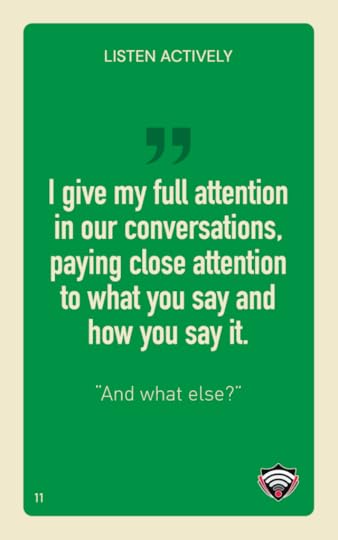
Just three words. But wow, do they open doors.
What It Means to Actively ListenThis habit means you’re giving your full attention in a conversation, not multitasking, not planning your next sentence, not solving the problem before they finish talking.
You’re listening to understand, not just to respond. You’re noticing tone, energy, and body language. And you’re holding space for what might come next, because the most meaningful thing someone says often comes after the thing they rehearsed in their head.
Why Being a Good Listener MattersActive listening builds trust faster than any feedback tool ever could.
When you listen like you mean it:
People feel respected and heard, which lowers defensiveness and raises collaboration.
You uncover deeper insights—because the real issues don’t usually come out in the first five seconds.
Conflict becomes easier to navigate—because people stop repeating themselves when they know they’ve been heard.
And decisions get better—because they’re grounded in what people actually need, not what we assume they need.
Why Actively Listening Is So HardYour brain loves shortcuts. It wants to jump to the fix, the summary, the response. Especially in fast-moving environments, pausing to fully listen can feel inefficient.
But silence isn’t wasted time—it’s where the good stuff surfaces.
Sometimes it’s hard to stay present when someone’s long-winded. Or when you’re sure you already know where they’re going. Or when there’s a shiny notification on your screen calling your name. But when you catch yourself drifting and refocus, you model one of the most generous acts in teamwork: full attention.
How to Make It Happen (Without Staring Like a Statute)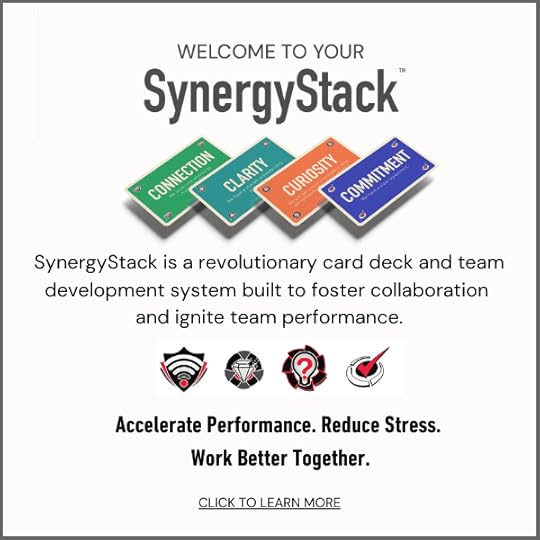
Here are five ways to practice active listening—without feeling stiff or scripted:
Use your phrase. When someone finishes talking, pause… then gently ask: “And what else?”
You’d be amazed how often that’s when the real insight comes out.
Give space. Resist the urge to jump in. Let the silence breathe.
Reflect what you hear. “It sounds like you’re frustrated because the priorities keep shifting—did I get that right?”
Notice emotion, not just facts. Energy dips or rises? That’s data.
Put distractions away. Close the laptop. Flip the phone. (Yes, even for five minutes.)
Other Phrases That Keep the Listening Going“Tell me more.”
“What’s most important about that to you?”
“I want to make sure I understand—can you walk me through that again?”
“What’s underneath that for you?”
“If you could wave a magic wand, what would change?”
Three Mini-Personal Experiments to Build Listening ChopsThe 3-Second Rule: For two weeks, challenge yourself to pause for three full seconds before responding in any conversation. Use that space to breathe, absorb, and then speak.The “And What Else” Streak: Use your powerful phrase—“And what else?”—at least once in every one-on-one conversation for the next 30 days. Track what surprising insights come up after the second layer.Daily Focus Window: Pick a 30-minute window each day where you go distraction-free in conversations. No phone. No email. No “just checking Slack.” Notice how people respond when you give them your full bandwidth.Active listening isn’t passive—it’s one of the most active things you can do for your team. When you slow down and truly tune in, people don’t just talk more—they open up, share more clearly, and collaborate more deeply.
And sometimes, the best way to keep the conversation going is a quiet prompt:
“And what else?”
See Also: You’ve Inherited a Quiet Team, Now What (An Asking for a Friend Video)
“I’m sorry.”
Ready to build a team that actively listens, shares ideas, and collaborates like pros?
Discover how the SynergyStack™ Team Development System helps your team build habits that stick—like apologizing readily and communicating with confidence.
👉 Explore SynergyStack
The post How to Make Active Listening Your Go-To Habit appeared first on Let's Grow Leaders.







